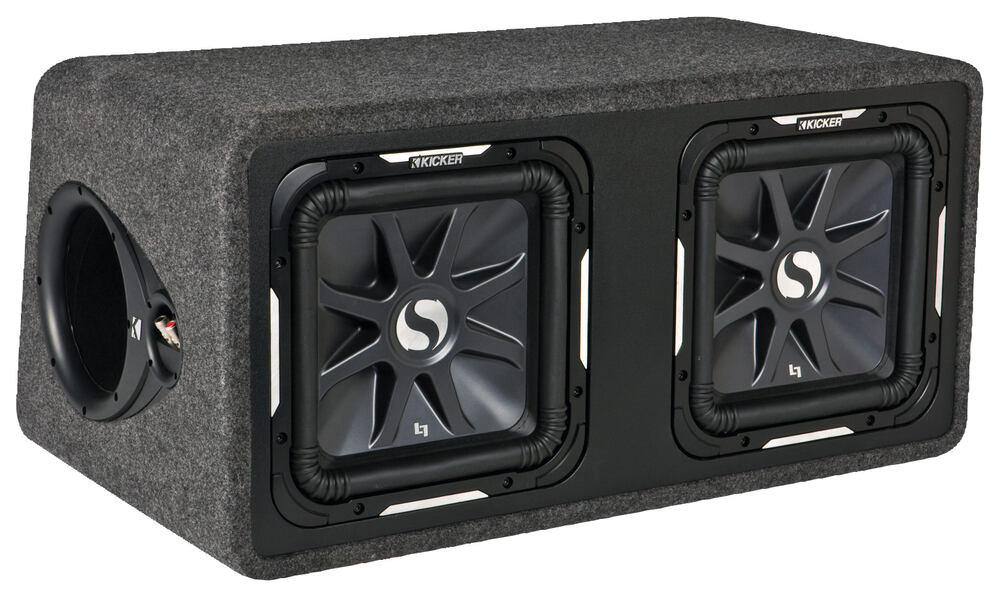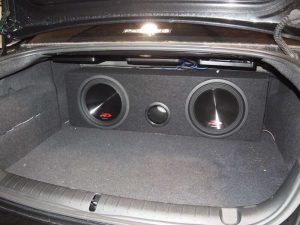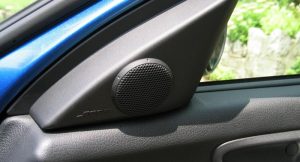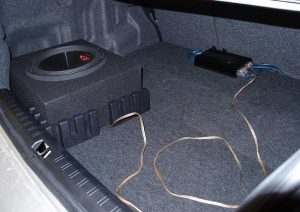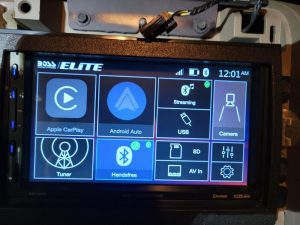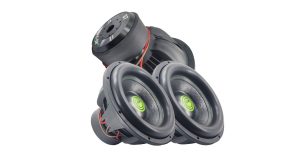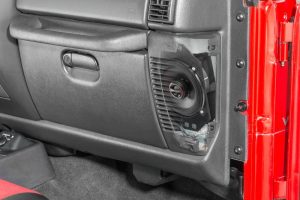Car audio enthusiasts know the thrill of deep, powerful bass that transforms a drive into an immersive experience. If you’ve explored the world of car subwoofers, you’ve likely encountered the Kicker Solo Baric series. Renowned for its groundbreaking design and earth-shaking performance, the Solo Baric subwoofer has carved a legendary reputation. But what exactly is a Solo Baric subwoofer, and why does it stand out in the crowded car audio market? Let’s dive into its history, technology, benefits, and why it remains a top choice for bass lovers in 2025.
Contents
- The Origins of the Kicker Solo Baric Subwoofer
- What Sets the Solo Baric Apart: The Square Cone Design
- Key Features of the Solo Baric Subwoofer
- Why Choose a Solo Baric Subwoofer?
- Solo Baric Models: Which One Fits Your Needs?
- Installing a Solo Baric Subwoofer: Tips for Success
- Solo Baric vs. Competitors: How It Stacks Up
- Common Questions About Solo Baric Subwoofers
- The Legacy of the Solo Baric Subwoofer
The Origins of the Kicker Solo Baric Subwoofer
Kicker, a trusted name in car audio since 1973, introduced the Solo Baric subwoofer in the early 1990s. The goal was simple yet ambitious: create a subwoofer that delivers unmatched bass output while fitting into compact enclosures. Traditional subwoofers often required large boxes, making them impractical for smaller vehicles. Kicker’s engineers tackled this challenge head-on, and the Solo Baric was born.
The name “Solo Baric” reflects its innovative approach. “Solo” hints at its ability to perform exceptionally with a single subwoofer, while “Baric” nods to the high-pressure performance it delivers. Over the years, the Solo Baric evolved through multiple generations, with the L7 and L7S series becoming iconic for their square cone design and robust engineering. Today, the Solo Baric remains a benchmark for car audio excellence.
What Sets the Solo Baric Apart: The Square Cone Design
The most striking feature of the Solo Baric subwoofer is its square cone. Unlike traditional round subwoofers, the square cone maximizes surface area, allowing the subwoofer to move more air and produce deeper, louder bass. This design innovation gives the Solo Baric a significant edge in efficiency and output.
The square cone isn’t just about aesthetics. It increases the cone’s surface area by up to 20% compared to a round subwoofer of the same size. More surface area means more air displacement, which translates to richer low-frequency sound. Whether you’re blasting hip-hop, EDM, or rock, the Solo Baric delivers tight, punchy bass that resonates through your entire vehicle.
Key Features of the Solo Baric Subwoofer
The Solo Baric’s reputation rests on its cutting-edge technology. Let’s explore the standout features that make it a favorite among car audio enthusiasts.
1. High-Power Handling
Solo Baric subwoofers boast impressive power-handling capabilities. Models like the Solo Baric L7S handle up to 1200 watts RMS, making them ideal for high-performance audio systems. This power ensures the subwoofer maintains clarity and depth even at extreme volumes.
2. Compact Enclosure Compatibility
One of the Solo Baric’s biggest advantages is its ability to perform in small enclosures. Kicker’s engineers optimized the subwoofer’s motor structure and suspension to thrive in compact spaces. This makes it perfect for vehicles with limited trunk or cabin space, such as hatchbacks or sedans.
3. Durable Construction
Kicker builds the Solo Baric to withstand the rigors of heavy use. The subwoofer features a reinforced cone, a heavy-duty voice coil, and a robust basket. These components ensure longevity and consistent performance, even when pushed to the limit.
4. Dual Voice Coil Options
Many Solo Baric models offer dual voice coil configurations, giving installers flexibility in wiring setups. This versatility allows users to match the subwoofer’s impedance to their amplifier, optimizing power delivery and sound quality.
5. Thermal Management
High-powered subwoofers generate heat, which can degrade performance over time. The Solo Baric incorporates advanced cooling technologies, such as vented pole pieces and perimeter venting, to dissipate heat effectively. This keeps the subwoofer running efficiently during long listening sessions.
Why Choose a Solo Baric Subwoofer?
With countless subwoofers on the market, why does the Solo Baric remain a top pick? The answer lies in its blend of performance, versatility, and reliability.
Unmatched Bass Performance
The Solo Baric delivers bass that’s both powerful and precise. Its square cone design and high-excursion capabilities produce low frequencies that you feel as much as you hear. Whether you’re chasing chest-thumping bass or subtle low-end detail, the Solo Baric excels.
Space-Saving Design
Car audio enthusiasts often face space constraints. The Solo Baric’s ability to perform in small enclosures makes it a game-changer. You don’t need a massive box to achieve massive sound, making it ideal for modern vehicles with compact interiors.
Versatility Across Music Genres
From the booming kicks of hip-hop to the rolling basslines of reggae, the Solo Baric handles every genre with finesse. Its responsive design ensures clarity and depth, no matter what you’re listening to.
Proven Durability
Kicker’s commitment to quality shines through in the Solo Baric’s construction. Built to endure high power and frequent use, this subwoofer is an investment that lasts. Many users report years of flawless performance, even in demanding conditions.
Solo Baric Models: Which One Fits Your Needs?
Kicker offers a range of Solo Baric subwoofers to suit different budgets and performance goals. Here’s a quick look at popular models in 2025:
- Solo Baric L7S: Known for its balance of power and affordability, the L7S comes in sizes from 8 to 15 inches. It’s a great choice for enthusiasts seeking high output without breaking the bank.
- Solo Baric L7: The premium option, the L7 offers top-tier power handling and bass precision. It’s ideal for audiophiles who demand the best.
- Solo Baric L7T: Designed for ultra-compact enclosures, the L7T brings Solo Baric performance to tight spaces, such as truck cabs or small sedans.
Each model delivers the signature Solo Baric sound, so your choice depends on your vehicle, budget, and audio goals.
Installing a Solo Baric Subwoofer: Tips for Success
To get the most out of your Solo Baric subwoofer, proper installation is key. Here are some tips to ensure optimal performance:
1. Choose the Right Enclosure
Kicker provides enclosure recommendations for each Solo Baric model. Ported enclosures enhance low-end output, while sealed enclosures offer tighter, more controlled bass. Follow Kicker’s guidelines to match your subwoofer to the right box.
2. Pair with a Quality Amplifier
The Solo Baric’s high power handling demands a capable amplifier. Choose an amp that matches the subwoofer’s RMS rating and impedance for clean, distortion-free sound.
3. Optimize Your Wiring
Dual voice coil models offer wiring flexibility. Consult a professional installer or Kicker’s wiring diagrams to achieve the desired impedance and power delivery.
4. Tune Your System
After installation, fine-tune your audio system. Adjust the amplifier’s gain, crossover, and phase settings to ensure the subwoofer blends seamlessly with your speakers.
5. Consider Sound Deadening
To reduce rattles and enhance bass clarity, add sound-deadening materials to your vehicle’s trunk or doors. This creates a cleaner listening environment.
Solo Baric vs. Competitors: How It Stacks Up
The car audio market is competitive, with brands like JL Audio, Alpine, and Rockford Fosgate vying for attention. So, how does the Solo Baric compare?
- Vs. JL Audio W7: The JL Audio W7 is a premium subwoofer known for its accuracy. However, it requires larger enclosures and comes with a higher price tag. The Solo Baric offers comparable performance in smaller spaces at a more accessible price.
- Vs. Alpine Type-R: The Alpine Type-R delivers strong bass but lacks the Solo Baric’s square cone efficiency. The Solo Baric produces more output in compact enclosures.
- Vs. Rockford Fosgate P3: The P3 is a solid budget option, but the Solo Baric outperforms it in power handling and low-frequency extension.
While each brand has its strengths, the Solo Baric’s unique design and versatility make it a standout choice for most car audio setups.
Common Questions About Solo Baric Subwoofers
Are Solo Baric subwoofers worth the investment?
Absolutely. Their combination of power, compact design, and durability makes them a smart choice for anyone serious about car audio.
Can a Solo Baric subwoofer work in a small car?
Yes. The Solo Baric’s compact enclosure compatibility makes it ideal for small vehicles, delivering big bass without sacrificing space.
Do I need a high-end amplifier for a Solo Baric?
While a quality amplifier enhances performance, many Solo Baric models work well with mid-range amps. Match the amp’s power to the subwoofer’s RMS rating for best results.
The Legacy of the Solo Baric Subwoofer
The Kicker Solo Baric subwoofer has left an indelible mark on the car audio world. Its innovative square cone, compact design, and relentless performance have made it a favorite for decades. Whether you’re building a competition-grade system or upgrading your daily driver, the Solo Baric delivers bass that transforms your listening experience.
In 2025, the Solo Baric continues to evolve, blending cutting-edge technology with Kicker’s passion for sound. If you’re ready to feel the power of deep, precise bass, the Solo Baric is your ticket to audio nirvana. Visit a car audio retailer or explore Kicker’s website to find the perfect Solo Baric model for your ride. Your ears—and your passengers—will thank you.
